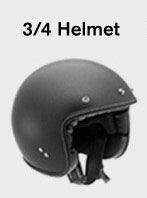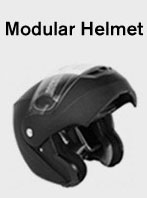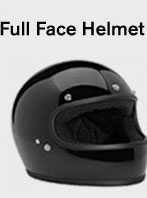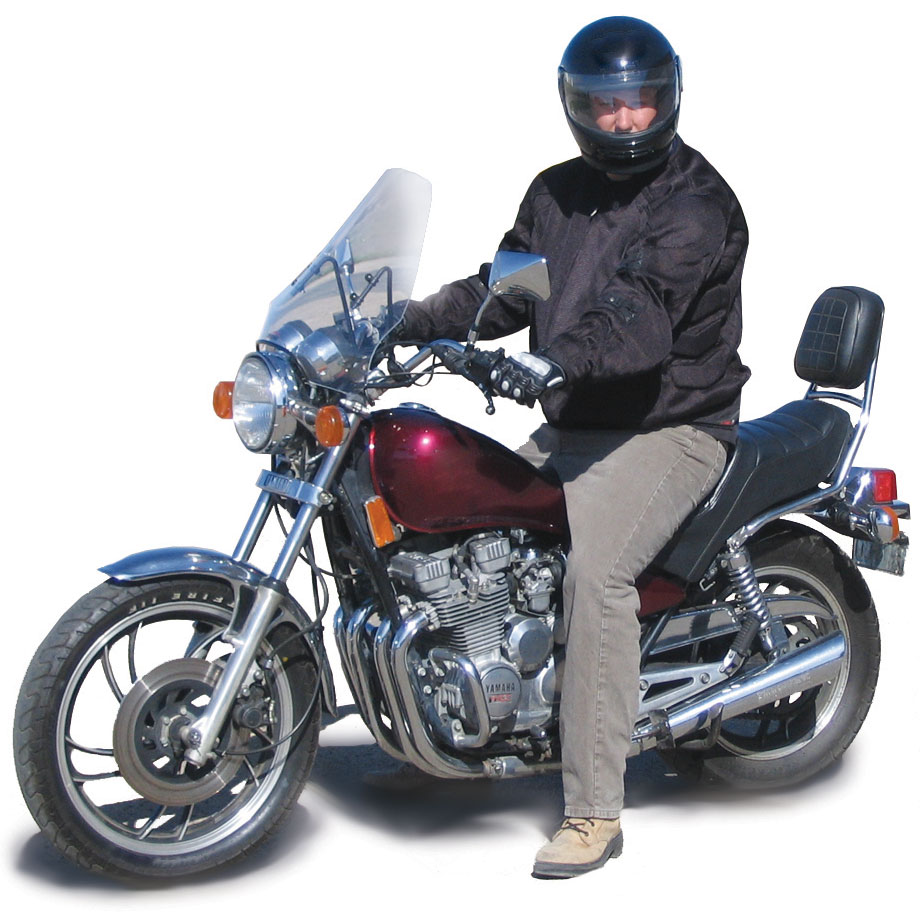Proper clothing includes:
- an approved helmet
- eye and face protection
- protective clothing
- MGDL riders (and any passengers) must have
- arms covered
- legs covered
- wear finger-covering gloves
- ankle-covering boots
- an one of the approved:
- three-quarter helmet
- modular helmet or
- full-face helmet





An approved helmet
An approved motorcycle helmet can protect you from serious head injury. When a motorcycle falls, the rider’s head often hits something hard, like pavement or a curb.
If you're in the MGDL program at the Learner, Novice 1 or Novice 2 stage, or the passenger of a Novice 2 motorcycle operator, you must wear an approved three-quarter, modular or full-face helmet .

The human head is fragile and head injuries are often fatal or crippling. Saskatchewan law says that riders and passengers must wear approved helmets and have them properly fastened. A surprising number of motorcyclists killed in collisions were not wearing their helmets. Wear your helmet every time you ride.
A helmet must:
- meet Saskatchewan standards
- have a strong chin strap and fastener
- be free of defects such as cracks, loose padding, frayed straps or exposed metal
A full-face or modular helmet is recommended. It’s a good idea to have a brightly coloured helmet such as red, white, yellow or orange. It should also have reflective material on the back and the sides. However, check the manufacturer’s specifications before using any adhesive on your helmet.
When selecting a helmet, make sure it fits properly. When you put it on, make sure it's snug and the strap is securely fastened. Studies of motorcycle crashes show that loose helmets are ineffective because they come off in collisions.
Eye and face protection
Your eyes need protection from wind, dust, rain, insects and small pebbles thrown up from vehicles ahead. If the motorcycle is not equipped with a windshield that deflects the airstream away from the driver’s face, the operator must wear goggles, safety glasses or a face shield. Eye protection is recommended for operators and passengers of motorcycles equipped with a windshield. Eyes can be easily damaged by debris and bugs, that’s why it’s important to protect your vision and your safety with a face shield that protects your whole face.
Eyeglasses are not made to protect riders. They will shatter if hit by a flying object. If you wear glasses, also use a face shield.
To be effective, eye or face protection must:
- be free of scratches
- be made of material that doesn’t shatter
- give a clear view to either side
- fasten securely so that it can’t be blown off
- allow some air to pass through so it won’t fog
- allow enough room for eyeglasses or sunglasses, if needed
Tinted goggles or face shields should not be worn at night.
Protective Clothing
Clothing can help protect you against injury in case of a fall and is required for proper visibility - wear bright clothing and a high-visibility safety vest.
Jacket and pants should cover your arms and legs completely. They should fit snugly enough so they don’t flap and yet let you move freely. Wear a jacket even in warm weather. Leather is best. Nylon, vinyl and other sturdy synthetic materials offer some protection against wind and bugs. However, in a crash, synthetic materials will stick to the skin when skidding on grass or pavement. Riders in the Motorcycle Graduated Driver Licensing (MGDL) program and their passengers will be required to have their arms and legs covered.
In cold or wet weather, your clothes should keep you warm and dry, as well as protect you against injury. You can’t properly control a motorcycle if you're numb. Riding for long periods in cold weather can cause severe chill and fatigue. A winter jacket should resist wind and fit snugly at the neck, wrists and waist. Rain suits should be of good quality, and be designed for riding. Those that are not designed for motorcyclists may balloon up or tear apart at highway speeds.
Boots or shoes should be sturdy and high enough to protect the ankles. Motorcycle operators in the MGDL program and passengers of operators in the Novice 2 stage of the MGDL program must wear ankle-covering boots while riding a motorcycle. Soles should be made of hard, durable material. Heels should be low so they don’t catch on rough surfaces. Don’t wear shoes with rings or loose laces that may catch on controls .
Gloves are also important. They give you a better hold on the handle grips and controls. Gauntlet gloves are recommended because they provide protection not only to fingers and knuckles, but also to wrists in case of an accident. Motorcycle operators in the MGDL program and passengers of operators in the Novice 2 stage of the MGDL program must wear hand-covering gloves while riding a motorcycle.